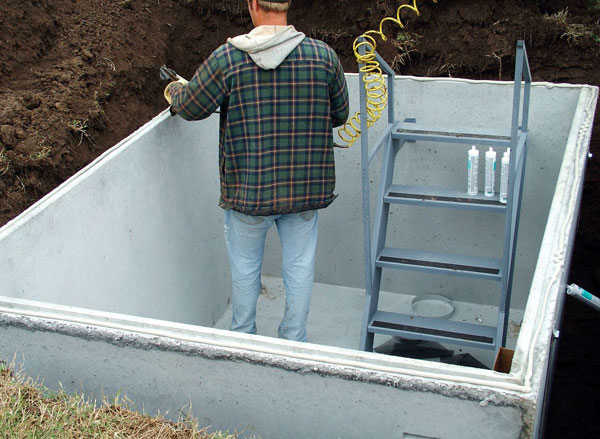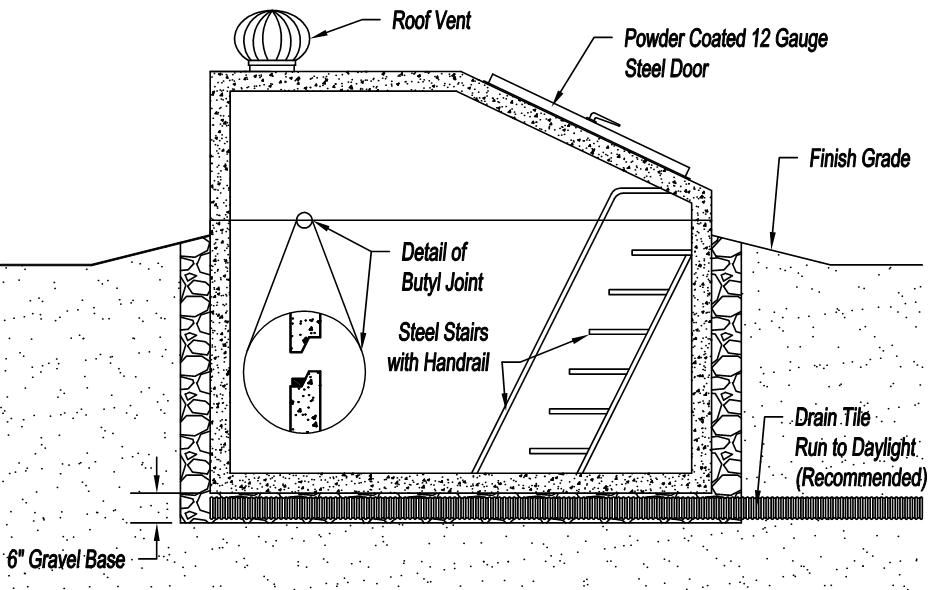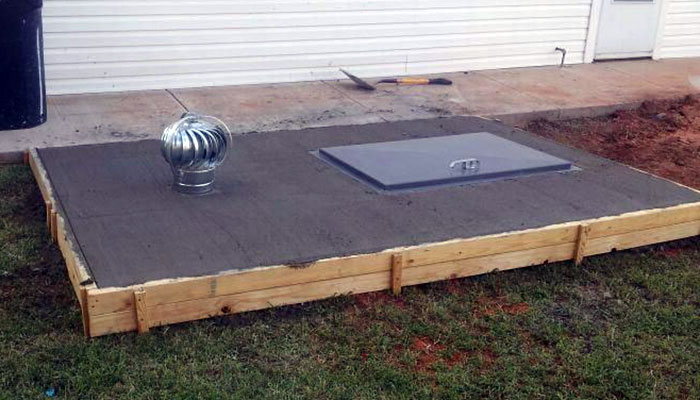People cannot control natural disasters. The key issue is how to stay safe from these natural disasters.
Storms are an example of such a natural disaster. Tornadoes and hurricanes are the deadliest storms.
There is no way to control or reduce these natural disasters, but you can build a shelter to protect yourself and your family from these storms if you want.
Today’s content is about the process of how to create this shelter. The question is “how to pour a concrete roof for storm shelter”.
Keep reading the full content to know the answers to the questions and more related information.

Design requirement for pouring a concrete roof for storm shelter
Everyone seems to be fit.
Create a storm shelter where everyone in the family can fit. Each person will need 3-5 square feet of space.
If you have 10 members in your family, you need to build a storm shelter of 30-50 square feet.
Everyone should feel comfortable.
You will need to enter the shelter shortly after receiving the weather forecast.
Storm shelters should be designed in such a way that everyone feels comfortable and has adequate lighting and ventilation.
The shelter should be designed in such a way that it will last for a long time.
During a storm, the wind speed is very high and the wind can blow the plants and throw them on the roof of the storm shelter.
So the roof should be designed in such a way that it does not break easily.
It has to be economic
Before making anything, you need to analyze whether it is affordable or not.
Making the storm shelter outside the house will reduce the cost and if the house collapses, the roof of the shelter is not likely to fall. So, when creating a storm shelter, you need to see if it is cost effective or not.
How to pour a concrete roof for a storm shelter?
If you live in a coastal area or where there are tornadoes and other storms, you need to think about the safety of yourself and your family.
That’s why you need to create a storm shelter. And this safe room can be made in two places- inside the roof or outside the house.
Within two to four minutes of the onset of the storm, a safe place is needed where the wind will not blow. So it is better to take shelter outside the house to go to a safe place in less time.
The structure of the concrete storm shelter should be much stiffer and more durable. The speed of the storm is 100-150 km per hour and the shelter has to be built in such a way that the shelter is intact with the speed of this wind.
According to the international standard, the roof of the shelter is not damaged even if the roof of the house is blown or broken.
Now let’s take a step-by-step guide on how to make a concrete roof for storm shelter.
Necessary tools
- Portland cement
- Aggregate
- Water
- Leveler
- Rebar
- Polythene
- Slab
- Shovel
- Sand
Step by step guideline

Step 01:
Since the roof will be poured, I assume you have done all the previous work correctly.
Digging with an excavator, making four walls with concrete blocks and then pouring the roof- you have to do all these. First, you need to put a slab on the roof.
Step 02:
After laying the slab, stick it inwards with poles so that the concrete does not break after pouring.
Then spread polythene on the slab. And elevate the four corners of the roof with wood and nail so that the concrete can not fall.
Step 03:
Now apply rebar everywhere. Rebar means a kind of mesh structure made of steel.
In other words, create a masonry structure. Install the steel joist. Set the steel joist to measure the length and width of the slab and place it on the polythenthen.
Occasionally, lift the rubber with a small piece of concrete so that the whole area is covered with concrete.
Step 04:
Concrete is available to buy in the market. You can make your own if you want.
Mix well with cement, sand, aggregate and water using a mixing machine. Then pour the prepared concrete over the roof structure.
Step 05:
Now place the concrete under the rubber with the help of a shovel. Then you have to level with the level.
But before leveling, measure the depth of the concrete with a pipe. The depth should be equal everywhere then you should use the leveler.
Step 06:
Level several times with a leveler. Leave it for a while so that the cement mass hardens well. Leave it like this for a day, then it will freeze.
Step 07:
Now you need to make grout to make the roof water-resistant. For this, you need to make a mixture of sand and Portland cement then level the roof with a leveler with grout all over the roof. Repeat this process several times.
Step 08:
And wait a while for the grout and concrete roof to solidify.
When the freezing is complete, pour water on the roof and check whether it is waterproof.
If you leave it like this for 1-2 weeks, a concrete roof will be made for storm shelter.
Frequently asking question and answer
Can I use bathroom as a storm shelter?
Bathroom space is much less. It is not a place for shelter for everyone in the family.
Moreover, the roof of the house may collapse during the storm, which makes it very risky to stay in the bathroom, so it is better not to use the bathroom as a shelter.
Where to build storm shelter?
The storm shelter should be made in the space outside the house, where there are no plants around.
If you make it inside the house, the roof will collapse, and the roof of the storm shelter may also collapse. If you are trapped inside the shelter after the storm, it will be difficult to find. So, it should be made outside.
Conclusion
Finally, I would like to say that safety is the main issue for everyone. You can do all this work alone, but it is better to do it with someone professional.
It is never desirable for the storm to cause any harm to anyone. We have to be careful about the weather.
To pour the roof, you need to know the answer to the question “how to pour a concrete roof for storm shelter “. Surely you have get the solution in this context.
Best of luck.





